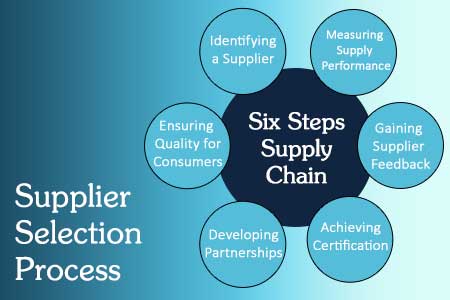If you asked a food manufacturer 20 years ago how they selected an ingredient supplier, they would have likely said it was based on price, flavor or the supplier location and preference. However, as government and industry put a stronger emphasis on food safety and quality, evaluating and selecting the right supplier today has become much more critical and complex.
Selecting the right supplier may seem like an onerous process for your supply chain. While having a more simplistic supplier selection process may be helpful for some smaller supply chains, a more involved process of selecting the right suppliers can help many food and nutrition companies meet or exceed regulatory standards, drive customer demand and build a strong brand reputation of quality products (see “Supplier Selection Process,” p. 31).
Quality and safety of our ingredients, products and packaging are paramount to our success at Abbott Nutrition, so choosing a good supplier is a critical business decision. Consequently, our supply chain team has identified six steps for choosing the right supplier, as well as several best practices in the industry.
Reflect back to your last home project. Your focus was probably to keep costs low. You may have used a lower quality, cheaper material to save money, and upon completion, were satisfied with the result. Unfortunately, over time, the project did not look as nice as it did at first.
Similarly, if you used the same criteria when selecting ingredients for your manufactured food products, it’s possible that the produced food would look good when it was first manufactured, but it may not meet shelf-life expectations. In addition, if you needed to go back to the supplier for replacements, they may not have the specific materials, or in some cases, they may no longer be in business. At this point, you are probably thinking, “If I had used higher-quality materials from a reputable supplier, my finished product would have met my expectations.”
Selecting the suppliers who can meet your consumers’ demand for higher-quality ingredients may bring some initial costs, but it will pay off over time through consistent, high-grade materials. However, the process to find the ideal supplier is often not easy and requires discipline and hard work.
Identifying a Supplier
Before selecting your supplier, it is important to gather the opinions of stakeholders and define the criteria for the selection process. This list of stakeholders may include members from research and development, purchasing, marketing, quality assurance and any other area of your organization that touches the supplier selection process.
During this time, it is important to identify a few suppliers to assess their capabilities and compare pricing. The supplier selection team should work with the potential suppliers to establish specifications. For example, they should explain how the supplier’s materials would be used in your products and within the manufacturing process. Keep in mind that the ultimate goal is a win-win situation for the supplier and manufacturer; therefore, open and transparent communication is extremely important.
A key criterion in selecting the right supplier is value. Cost should not be the lone driver; you should instead look at the total cost of ownership, which looks at the supplier’s:
- Customer service
- Delivery commitments
- Reliability and responsiveness
- Resource savings (hard and soft)
Measuring Supply Performance
Another important step of the supplier management process is developing an audit and assessment program. Best-in-class supplier programs conduct audits throughout multiple stages of the manufacturer/supplier relationship. You should always conduct an audit before the contract is signed to confirm that the supplier does not have any significant compliance or quality system failures that could affect your ability to produce top-quality products. Another reason to conduct the audit beforehand is to understand the supplier’s strengths and weaknesses before the relationship becomes official.
Even after the contract is signed, you should continue auditing, basing the frequency of the audits on the criticality of the supplier. To determine the frequency, all suppliers should be categorized into a level of risk or importance. This prioritization will help you be smarter and more effective with your resources and place a higher focus on your important, high-risk suppliers, while continuing to monitor second-tier suppliers.
Beyond an established audit program, you should continuously monitor and assess each supplier’s performance. You can track positive or sustained strong performances, as well as negative trends.
Gaining Supplier Feedback
Another tool you can utilize with suppliers is a self-assessment questionnaire. The supplier self-assessment can be used to identify performance gaps, as well as discover how the supplier understands their own operation.
In addition to audits and assessments, it also is beneficial to monitor informative metrics that direct value to the business. You should discuss and select the appropriate metrics with suppliers to receive their input and understanding of purposeful measurements. Examples of these metrics include rejected lots, perfect shipments and documentation errors. The metrics selected should measure the total cost of ownership, as well as improve performance toward the maximum finished product performance.
Achieving Certification
As your supplier relationship grows stronger, and both parties feel they are receiving positive performances, the supplier may be able to achieve a certified status. This occurs when you establish a set of selected criteria to be met by your suppliers. Certification must be obtained with sustained successful performance and can be lost with poor performance or a negative compliance outcome from an audit.
As the relationship continues to grow, the supplier also will become more integrated into your manufacturing process.
Developing Partnerships
Ultimately, the manufacturer/supplier relationship is at its best when a strategic partnership is formed, allowing full knowledge of the source of materials and ensuring high quality.
With a stronger business partnership, a supplier is more likely to:
- Anticipate what is needed from the manufacturer and begin to take the leadership role in communication.
- Notify the manufacturer if problems occur that limit production availability, or a quality issue is identified.
- Communicate production delays when downtime or maintenance is required.
This type of partnership allows for an increased understanding and mutual benefits for both parties. It cultivates stronger commitments and encourages a greater interest in success for the material and finished goods. This type of relationship is your ultimate goal.
However, there are risks associated with forging this kind of partnership. Trust in both parties becomes paramount, and both entities must ensure no potential or real conflicts of interest occur. When both parties become more reliant on each other, if there is a breakdown on either side or the relationship dissolves, there is much more to lose.
Ensuring Quality for Consumers
Depending on the number of materials and ingredients needed, developing a supplier quality management program can be a complex and upfront investment. However, once you choose to build strong relationships with reliable suppliers, you will have peace of mind, knowing you’re delivering high quality to your consumer.
The benefits are realized when your supplier quality team is focused on issues other than material quality, and your satisfied end-users have confidence in the products you provide.
To know more, attend this session “Final FSMA Subpart G Rule Requirements for the Receiver Liability for Supplier Preventive Controls ” with expert speaker Dr. John M. Ryan, who is the president of Ryan Systems, Inc. His companies research and test new technologies designed to protect the food supply chain and provide early preventive planning help to supply chain members in need of improving both food safety and quality, will discuss these new supply-chain-applied control rule requirements and explore some of the options open to receivers when it comes to assuring that their own documentation systems provide proof of rule compliance.


